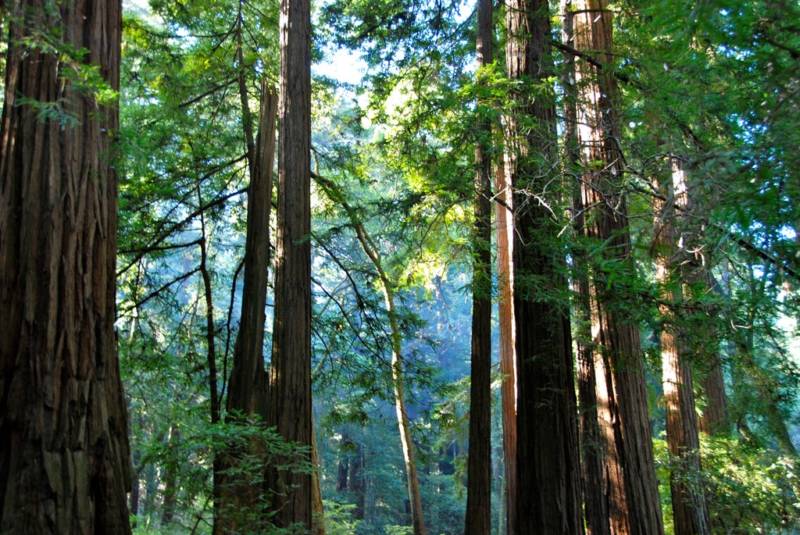The overgrown forests have encroached on the Sierra’s meadows, harming their function as natural sponges that absorb and filter storm runoff. Many meadows have also been degraded by livestock grazing. As a result, rainfall and snowmelt run off too quickly, resulting in erosion, diminished water quality and reduced groundwater recharge.
Because of these and other factors, runoff from the Upper Feather River Watershed, according to one estimate, has been reduced by 400,000 acre-feet (493 million cubic meters) annually. That’s more than 10 percent of the capacity of Lake Oroville downstream, and enough water to serve nearly 1 million households for a year.
The Feather River is one of five watersheds that would get special attention under AB 2480 because it feeds the state’s two largest reservoirs: Shasta and Oroville. Others are the Trinity, Pitt, McCloud and Sacramento rivers. In total, said Wayburn, these watersheds encompass some 7 million acres (2.8 million hectares), about 62 percent of which is publicly owned, mainly by the U.S. Forest Service and Bureau of Land Management.
“There’s a real synergy where we can do good things for forests, and also do really vital things for watershed function,” Wayburn said.
The bill states that projects in these watersheds may be eligible for state funding if they engage in vegetation management, meadow restoration, road removal and repair, and stream channel restoration.
It also states that purchasing conservation easements to preserve private forest lands may be eligible for state funding to prevent “conversion and degradation” of these lands.
The bill has officially been supported by several conservation groups, including Audubon California, the California League of Conservation Voters, Defenders of Wildlife, Trust for Public Land and the Mono Lake Committee.
Others have expressed concern about the bill, although they have not yet announced any formal opposition.
Among them is Jonathan Kusel, executive director of the Sierra Institute for Community and Environment, which is based in the Feather River watershed. The bill’s emphasis on conservation easements causes him to worry that landowners will be paid to manage their forests for water supplies to the exclusion of other issues, such as wildlife habitat, greenhouse gas emissions and forest health.
He would like to see the bill include prescriptions for forest management that would boost overall ecosystem health.
“Trying to manage just for water is as stupid as trying to manage for any other single output,” Kusel said. “We simply are not going to solve the problem and, in fact, we might do worse if what we do is only utilize conservation easements.”
Katherine Evatt, president of the Foothill Conservancy, shares this concern. She also noted that the bill states projects may be eligible for funding if they show “a demonstrated likelihood of increasing conditions for water and snow attraction, retention and release.” This, she said, is a pretty weak test.
For example, some studies have suggested the Sierra could deliver more water if forested areas were cleared to create open space. The reasoning is that these areas would accumulate snowpack that would otherwise evaporate from the tree canopy. But the science on this is not robust, and it doesn’t take into consideration other effects on the ecosystem. Clearcuts also cause snow to melt too fast, because they are exposed to the sun, thereby generating more erosion. They also disturb wildlife habitat.
“We don’t think the state should fund these projects until there is more evidence they can be done in an ecologically sound way,” she said.
John Buckley, executive director of the Central Sierra Environmental Resource Center, said the bill should be broadened to allow state funding of other Sierra watersheds, besides those that feed the Shasta and Oroville reservoirs. Several other rivers also serve millions of Californians and their watersheds could be considered equally important, including the Mokelumne, Tuolumne and Stanislaus rivers.
Buckley also noted the legislation does not earmark any specific funding amounts for watershed projects, nor does it change any state policies to reform how forests are managed.
“Although there is a very positive intent made clear in the bill for source watersheds to be better managed, the actual wording simply makes it a state policy that source watersheds should be ‘considered’ for financing to do positive maintenance and repair,” he said.
Wayburn said she is open to refinements in the bill as it moves forward. But she also defended it as written. In particular, she said the focus on conservation easements is appropriate, and the details will follow practices now common in the state for such easements, which require an emphasis on preserving social and environmental benefits.
“The goals are pretty clear in the bill that it’s to enhance and to maintain watersheds,” she said. “You’re not looking at trying to support otherwise commercial activities.”
The move to begin protecting Sierra watersheds got a boost last year when the Association of California Water Agencies (ACWA) released an important policy document. It recognizes the importance of mountain headwaters to the state, and calls for focused restoration efforts. The report is significant, because ACWA represents hundreds of water agencies that deliver 90 percent of California’s urban and agricultural water supplies.
Critics of AB 2480 are pleased to see the bill take this recognition a step further. But they’d like to see it do a bit more.
“It is perhaps one small mini-step for the California Assembly to recognize forests and watersheds as important components of the state’s overall water supply system,” Buckley said. “However, most 4th and 5th graders already learn that in elementary school. What is urgently needed … is significant mandated funding to actually achieve the desired source watershed enhancement.”

